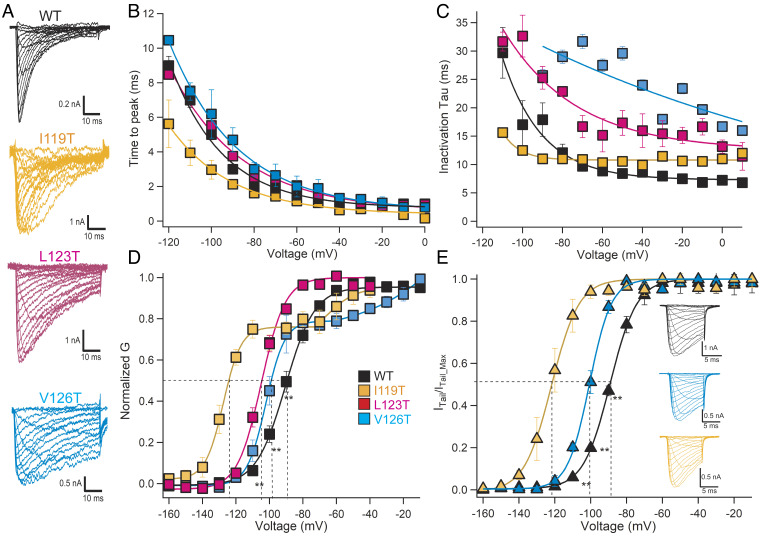Fig. 2.
Functional properties of NaVAb with IEM mutations. (A) Families of sodium currents. NaVAb/Δ28 WT and mutants were expressed in Hi5 insect cells and studied by whole-cell voltage clamp recording as described in Materials and Methods. (B) Time to reach peak current is plotted as a function of stimulus voltage as calculated from the results of panel A. (C) Mean time constants for inactivation calculated from the results of experiments similar to those in panel A as described in Materials and Methods. (D) Voltage dependence of activation of WT and the indicated IEM mutants in the S4-S5 linker. Current/voltage (I/V) relationships of the peak sodium currents were recorded in response to steps to voltages ranging from −160 mV to +60 mV in 10-mV increments from a holding potential of −160 mV or −180 mV. Conductance/voltage (G/V) relationships were calculated as described in Materials and Methods. (E) Voltage-dependent activation curves determined from peak tail current amplitudes measured at −180 mV. Short depolarizing pulses, 10 ms, were applied from a holding potential of −180 mV in 10-mV steps. Tail currents were normalized to the highest amplitudes. (Inset) Representative traces of inward sodium currents and tail currents for WT, I119T, and V126T.

